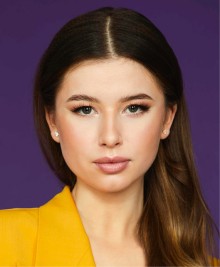Wearable Technology: Design, Development, and Applications
This course offers a comprehensive exploration of wearable technology, covering its evolution, core technologies, and diverse applications.
English
Last updated
Sat, 06-Jan-2024
**Course Title: Wearable Technology: Design, Development, and Applications**
**Course Overview:**
This course provides a comprehensive exploration of wearable technology, covering the design, development, and diverse applications of these innovative devices. Participants will gain insights into the technological foundations, user experience considerations, and emerging trends in the rapidly evolving field of wearable tech. Through practical projects, case studies, and hands-on development, participants will develop the skills needed to create and contribute to the growing ecosystem of wearable devices.
**Module 1: Introduction to Wearable Technology**
* Lesson 1.1: Definition and Evolution
- Understanding the concept of wearable technology and its historical evolution.
- Exploring key milestones and breakthroughs in the field.
* Lesson 1.2: Types of Wearable Devices
- Overview of various wearable devices, including smartwatches, fitness trackers, augmented reality glasses, and smart clothing.
- Examining the purpose and functionalities of each type.
* Lesson 1.3: Market Trends and Industry Landscape
- Analyzing the current market trends, major players, and potential growth areas in the wearable technology industry.
**Module 2: Core Technologies in Wearables**
* Lesson 2.1: Sensor Technologies
- Understanding the role of sensors in wearable devices.
- Exploring accelerometer, gyroscope, heart rate monitor, and other sensor technologies.
* Lesson 2.2: Connectivity
- Exploring wireless communication protocols (Bluetooth, Wi-Fi, NFC) in wearables.
- Understanding the integration of wearables with smartphones and other devices.
* Lesson 2.3: Power Management
- Strategies for efficient power consumption in wearable devices.
- Exploring battery technologies and energy harvesting.
**Module 3: Design and User Experience (UX) Considerations**
* Lesson 3.1: Ergonomics and Aesthetics
- Design principles for comfortable and visually appealing wearable devices.
- Case studies of successful wearable design.
* Lesson 3.2: User Interface (UI) Design
- Navigating the challenges of designing interfaces for small screens.
- Incorporating intuitive gestures and interactions.
* Lesson 3.3: User Experience Testing
- Methods for evaluating and improving the user experience of wearable devices.
- Conducting usability testing and gathering user feedback.
**Module 4: Development of Wearable Applications**
* Lesson 4.1: Wearable Operating Systems
- Overview of operating systems commonly used in wearables (watchOS, Wear OS, Tizen).
- Developing applications for specific platforms.
* Lesson 4.2: App Development Tools and Frameworks
- Exploring development tools, SDKs, and frameworks for creating wearable applications.
- Hands-on coding exercises for building simple wearable apps.
* Lesson 4.3: Cloud Integration and Data Analytics
- Connecting wearables to cloud services for data storage and analysis.
- Implementing data analytics to derive meaningful insights.
**Module 5: Applications and Use Cases**
* Lesson 5.1: Fitness and Healthcare Wearables
- Examining the role of wearables in monitoring health and fitness.
- Case studies of successful healthcare applications.
* Lesson 5.2: Augmented and Virtual Reality Wearables
- Exploring applications of AR and VR in wearables.
- Use cases in gaming, education, and industrial training.
* Lesson 5.3: Future Applications and Innovations
- Anticipating and brainstorming potential future applications of wearable technology.
- Examining emerging trends and cutting-edge innovations.
**Module 6: Ethical, Security, and Privacy Considerations**
* Lesson 6.1: Ethical Design Practices
- Addressing ethical considerations in the design and deployment of wearable devices.
- Ensuring inclusivity and accessibility.
* Lesson 6.2: Security Challenges
- Identifying security vulnerabilities in wearables.
- Implementing security measures to protect user data.
* Lesson 6.3: Privacy Policies and Compliance
- Understanding legal and regulatory requirements related to wearable technology.
- Crafting and implementing privacy policies.
**Conclusion:**
By the end of this course, participants will have a thorough understanding of wearable technology, from conceptualization to development and real-world applications. Armed with practical skills and insights, participants will be prepared to contribute to the exciting and dynamic field of wearable technology.
